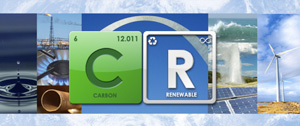
And how can that be achieved? “The key is to turn carbon dioxide into a useful material so it’s no longer waste,” says James Tour, a chemistry professor at Rice. “We want the center to partner with energy companies – including oil, natural gas and coal – to make carbon a profitable resource.”
The center is part of Rice’s Richard E. Smalley Institute for Nanoscale Science and Technology, and will “draw upon the combined knowledge of the university’s nanotechnology experts, for whom the development of clean and plentiful energy is a priority.â€
In a paper published by Nature Materials, Tour and colleagues Vicki Colvin and Carter Kittrell state that since fossil fuels will play a major role in the economy for many decades to come, despite the expansion of renewable energy, the center will try to develop the technological expertise to back up what it calls ‘green carbon’ to make a transition to a clean tech future.
One of the processes suggested by the authors is carbon dioxide separated from hydrogen through steam methane reformation, which then could be repurposed immediately as a basic feedstock for chemicals or sequestered temporarily in tapped-out oil wells. They claim that compressed and liquefied carbon could even replace water to enhance oil and gas recovery.
The researchers believe humanity would benefit tremendously if it could develop an efficient catalytic process to convert carbon dioxide back to methanol, formaldehyde or other small molecules. They foresee a market for carbon in dry cleaning to replace harmful chlorocarbons and as a refrigerant to replace materials that are 1,000 times as potent as greenhouse gases.
“The whole idea,” Tour added, “is to lower the carbon dioxide footprint and to show you don’t have to get rid of anybody’s energy source.â€





